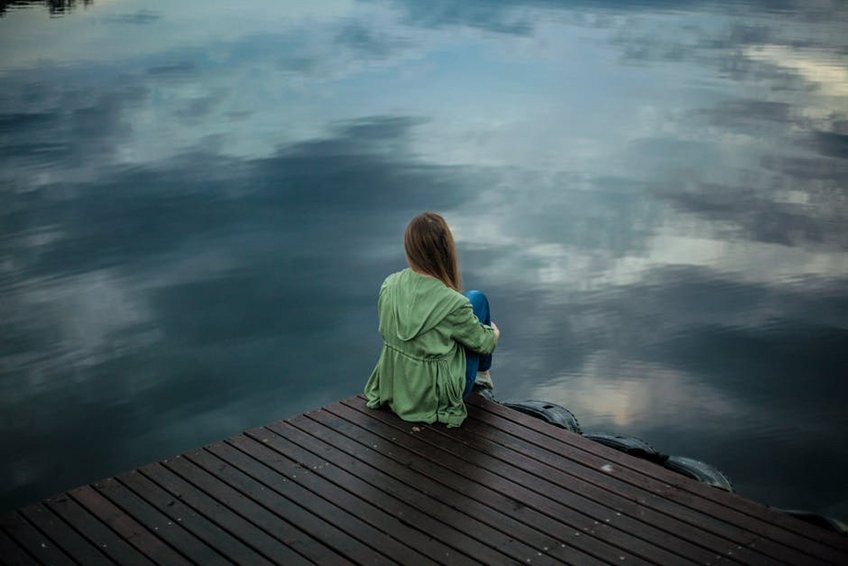Ethiopia Danakil Depression Expedition: Explore Earth’s Most Extreme Landscape
The Ethiopia Danakil Depression expedition transports you to one of the hottest, lowest, and most geologically active places on the planet, where surreal landscapes defy imagination. This adventure reveals bubbling lava lakes, multicolored hydrothermal fields, and vast salt plains that create an otherworldly environment unlike any other destination. Your journey covers essential planning, top sights, cultural insights, and practical logistics for a safe, unforgettable experience.
Essential Danakil Depression Information
The Danakil Depression sits in northeastern Ethiopia’s Afar region, approximately 100 meters below sea level, making it one of Earth’s lowest points. This extreme environment features record-breaking temperatures that regularly exceed 120°F (49°C) during daytime hours. Geological activity constantly reshapes the terrain through volcanic eruptions and tectonic plate movements.
Afar tribespeople have inhabited this harsh landscape for centuries, extracting salt through traditional methods passed down through generations. The region’s cultural heritage reflects ancient trading routes that once connected Ethiopia to the Red Sea. Modern expeditions respect these traditions while introducing travelers to this unique way of life.
Geographic and Geological Overview
The depression spans roughly 10,000 square kilometers across the Afar Triangle, where three tectonic plates slowly diverge. This geological activity creates the spectacular landscapes you’ll explore during your Ethiopia desert adventure.
- Dallol hydrothermal field features acidic springs, salt mountains, and vibrant mineral deposits in yellow, green, and red hues formed by volcanic gases interacting with salts.
- Erta Ale volcano contains one of only six permanent lava lakes worldwide, with molten rock bubbling continuously in a 2-kilometer wide caldera.
- Salt flats extend over 1,200 square kilometers, where Afar salt miners cut rectangular slabs from the crystalline surface using traditional hand tools.
- Budget tours cost $800-$1,200 for 3-4 days with basic camping, shared transportation, and simple meals, ideal for adventurous travelers comfortable with rustic conditions.
- Mid-range options run $1,500-$2,000 for 5-6 days featuring improved camp facilities, private vehicles, and experienced English-speaking guides with geological expertise.
- Luxury expeditions charge $2,100-$2,500 for 7 days including comfortable sleeping arrangements, chef-prepared meals, and additional security measures for premium comfort.
- Ethiopian Tourism Organization
- Lonely Planet Ethiopia Guide
Climate and Weather Patterns
Daytime temperatures typically range from 104°F to 122°F (40°C to 50°C) between October and April, the primary expedition season. Nighttime brings moderate relief with temperatures dropping to around 77°F (25°C) in desert camping areas. Humidity levels remain extremely low throughout the region, rarely exceeding 20%.
The Danakil Depression receives less than 7 inches (18 cm) of annual rainfall, primarily during brief July-August showers. Wind patterns shift seasonally, with northeastern breezes providing some cooling effect during winter months. Always carry 4-6 liters of water daily to prevent dehydration in these extreme conditions.
Historical and Cultural Significance
Salt trading caravans have crossed the Danakil for over 2,000 years, transporting slabs to Ethiopian highlands via camel routes. The Afar people maintain this tradition, with salt extraction remaining their primary livelihood alongside limited livestock herding. Their nomadic lifestyle adapts to the challenging environment through specialized knowledge.
European explorers first documented the region in the 1920s, with subsequent scientific expeditions revealing its unique geology. The area gained protected status in 2019 as part of Ethiopia’s conservation efforts. Modern visitors should respect local customs, including conservative dress and photography permissions.

Alt: “danakil-depression-salt-flats-afar-salt-miners-working”
Planning Your Ethiopia Danakil Depression Expedition
Organizing your Ethiopia Danakil Depression expedition requires careful timing between November and February when temperatures become marginally more manageable. This period offers the best conditions for exploring volcanic sites and salt formations without extreme heat compromising your experience. You’ll need to book tours 3-6 months in advance through licensed operators for this regulated region.
Budget approximately $800-$2,500 for a 4-7 day expedition, depending on group size, comfort level, and included amenities. All visitors must join organized tours with armed guards, as independent travel remains prohibited throughout the Afar region. Physical preparation should include cardiovascular conditioning and heat acclimatization exercises.
Best Time to Visit the Danakil Depression
November through February provides optimal conditions with daytime temperatures averaging 95°F-104°F (35°C-40°C) and minimal rainfall. These months offer clearer skies for photography and more comfortable camping conditions at Erta Ale volcano. Early morning starts around 5 AM help you avoid peak heat hours.
March to May sees temperatures climbing above 113°F (45°C), making extended exploration challenging without adequate preparation. June to September brings occasional rain and higher humidity, though expeditions operate year-round. Shoulder seasons may offer lower prices and fewer visitors.
Budget Planning and Costs
Your Ethiopia desert adventure costs vary significantly based on tour duration and comfort level.
Essential Preparation Checklist
Pack lightweight, loose-fitting clothing in natural fabrics, a wide-brimmed hat, and sturdy hiking boots with ankle support. Include high-SPF sunscreen, polarized sunglasses, and a headlamp with extra batteries for nighttime volcano viewing. Photography equipment needs protective casing against fine dust and extreme temperatures.
Secure your Ethiopian visa online before arrival, valid for 30-90 days depending on nationality. Obtain comprehensive travel insurance covering emergency evacuation from remote areas. Begin hydration protocols several days before departure and maintain 4-6 liter daily water intake throughout your journey.
Top Attractions and Activities
Dallol Volcano showcases neon-yellow sulfur formations, green copper pools, and towering salt pillars creating a landscape resembling an alien planet. The hydrothermal field spans approximately 3 square kilometers, with guided tours leading you along safe pathways through this geologically active area. Early morning visits provide the best photographic conditions before heat distortion intensifies.
Erta Ale’s lava lake glows spectacularly after sunset, with molten rock bubbling and splashing within the volcanic crater. The moderate 3-hour hike to the summit begins around sunset to avoid daytime heat, with most groups spending several hours observing the volcanic activity. Basic mountain shelters provide overnight accommodation for those wishing to witness both dusk and dawn viewings.
Must-See Highlights
Lake Afrera’s saltwater body offers a surprising oasis where local communities harvest salt through evaporation techniques. The lake’s high mineral content creates therapeutic properties, though swimming requires caution due to extreme salinity. Nearby hot springs provide natural bathing opportunities in more manageable temperatures.
The Salt Canons feature dramatic crystalline formations carved by rare flash floods, creating narrow passageways up to 30 feet deep. These geological wonders demonstrate the region’s dynamic interaction between extreme aridity and occasional torrential rains. Morning light illuminates the salt crystals beautifully for photography.
Hidden Gems and Local Favorites
Afar salt mining camps welcome respectful visitors to observe traditional extraction methods, where workers cut 4-kilogram slabs using hand tools. The process hasn’t changed significantly in centuries, with camel caravans still transporting salt to market towns. Early mornings provide the most active mining observations before afternoon heat halts work.
Black Lava Field near Erta Ale showcases spectacular volcanic rock formations from previous eruptions, with sharp, glass-like surfaces creating dramatic landscapes. Fewer tours include this area, offering more solitary exploration opportunities. The field’s dark coloration absorbs heat, making early morning visits essential.
Adventure Activities and Experiences
Camel trekking across the salt flats provides authentic transportation similar to historical trading caravans, covering 5-8 miles daily at a gentle pace. These experiences typically include overnight camping under spectacular star-filled skies unaffected by light pollution. The rhythmic camel gait offers a meditative travel method through the vast landscape.
Geology-focused tours explain the region’s unique tectonic position where the African, Arabian, and Somali plates diverge. Specialized guides detail how this activity creates the depression’s distinctive features through volcanic and hydrothermal processes. These educational components deepen appreciation for the dynamic environment.
Practical Travel Information
Mekele serves as the primary gateway city, with tours typically including transportation from there to the depression’s entry point. The journey covers approximately 150 kilometers of rough tracks requiring 4-5 hours in specialized 4WD vehicles. Road conditions vary seasonally, with occasional washouts during rare rainfall periods.
Accommodation ranges from basic camping at designated sites to occasional rustic lodges with limited amenities near Lake Afrera. All tours provide camping equipment, though quality varies significantly between budget and premium options. Nighttime temperatures permit reasonable sleeping conditions with adequate bedding.
| Category | Options/Features | Price Range (USD) |
|---|---|---|
| Accommodation | Desert camping, basic lodges, mountain shelters | $30-150/night |
| Transportation | 4WD vehicles, armed escorts, support trucks | $100-300/tour |
| Guides/Security | English-speaking guides, Afar scouts, park fees | $50-150/person |
| Food/Water | Catered meals, bottled water, camp cooking | $40-80/day |


